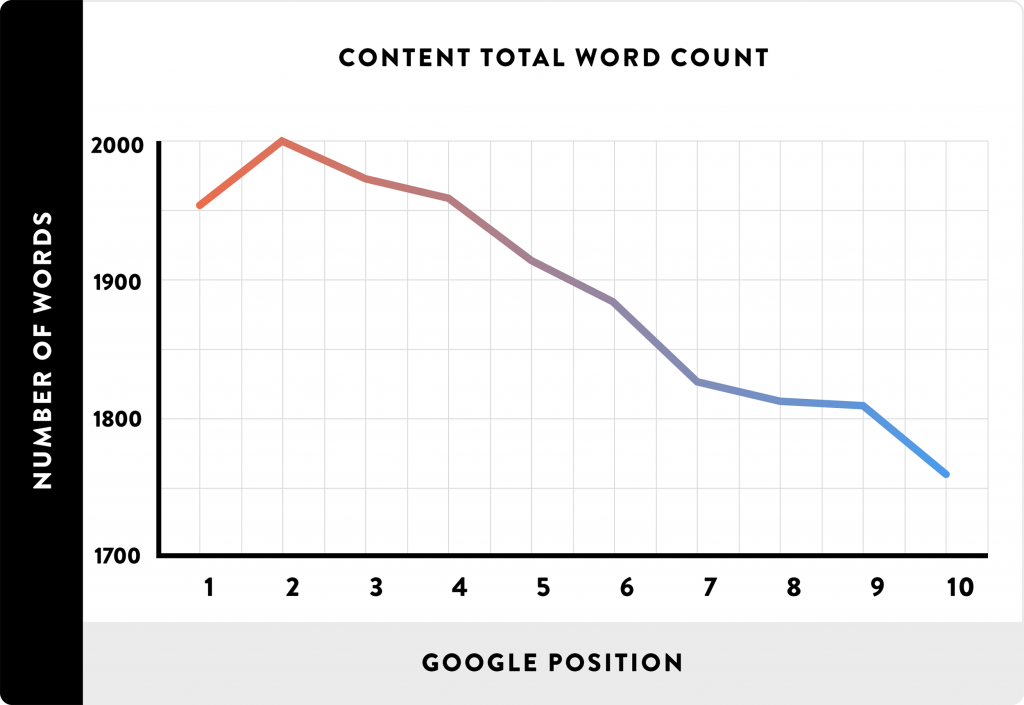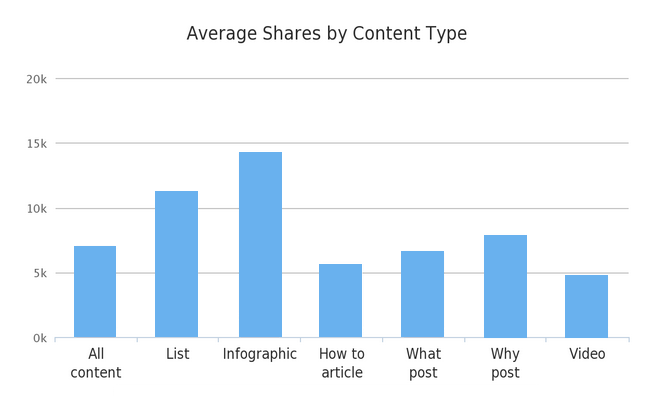How to Bring Your Blog from Page 2 to Page 1 on Google
October 14, 2020 | Arthur Brodskiy

 Form the cornerstone of your SEO strategy with these 5 overlooked tips
Form the cornerstone of your SEO strategy with these 5 overlooked tips
#1. Find out who’s doing it best (and do it better)
The best way to deal with your competition is to do what they do better. It’s not a novel idea in the content marketing world. In fact, Brian Dean at Backlinko has his own method that he calls the Skyscraper Technique. Whatever you want to call it, the basic idea is pretty straightforward. What you want to do is look at the top results for the keyword you’re trying to rank for. Click on those results. Study them. What do they all have in common? What questions do they answer? How long are they? How do they look visually? Once you have a good idea of what it takes to be number one for your keyword, it’s time to get to work. You’re going to edit your content so that it’s better, longer, and more comprehensive than your competitiors’. An important aspect here is to make sure you create super-relevant, highly informative long-form content. In the eyes of Google, size does in fact matter:
#2. Optimize by focusing on a single keyword
When it comes to writing long-form content, you might think it’s a good idea to focus on a few, rather than just one, keyword. Don’t fall into this trap. Remember, users are searching for a single topic at a time. The more focused your content is, the more likely it is to be appreciated by the reader. Nobody wants to search for Topic A and read an article that only touches on Topic A before moving on to topics B, C and D. That doesn’t mean your content is only going to rank for that one keyword. Long-tail searches tend to pick up key phrases that come up naturally in content. It could easily happen with your content, too. Just stay focused. The spray-and-pray approach might seem good on paper. After all, if your content involves 5 keywords, you have a chance to rank for at least one of them. But this approach appeals to heavily to algorithms and risks alienating the user. What’s the point of having your page rank if your readers are mashing the back button after a couple of seconds? In the long term, a high bounce rate will make you lose your page 1 position anyway. It all comes down to optimization. Better to have focused, relevant content that adds value to the user’s experience. Google will pick up on the higher engagement and lower bounce rate.#3. Use an attention-grabbing headline and meta description When your page is displayed in Google’s search results, two basic elements are visible: the headline (or title tag) and the meta description. Let’s take a moment to dig into each:
Headlines (title tags)
The headline is the most important part of your page. It’s what readers use to decide if they want to click through and read the rest of your article or not. And that same click-through rate (CTR) is what Google uses to decide of your article’s worth ranking. Your headline should get enough attention that it gets read. It should generate enough interest to get the user to click on it (or, failing that, read the meta description). And it should contain your target keywords to help with SEO. So how do you go about crafting a compelling and optimized headline? First off, just keep in mind that you don’t have to reinvent the wheel here. Consult a list of headline formulas from a solid source (this post from CopyHackers is probably the most exhaustive). Also, run your target keywords through Google and take a look at the title tags of high-ranking pages. You’ll probably see some trends:- “How-to” headlines often always a winner Example: How to Prepare for a Phone Interview
- Numbers make headlines more click-worthy Example: 10 Ways to Reduce Your Summer Utility Bills
- Using the words “best” or “top” Example: The Best iPhone Charger Cables that aren’t Made by Apple
Meta descriptions
 The thing about meta descriptions is that they don’t directly affect your page’s search engine ranking. They exist solely for the set of eyes that are looking at them. But that doesn’t mean you should ignore meta descriptions entirely.
If a user has read your title tag and still hasn’t clicked on your page, the meta description might just be the factor that tips the scales for you.
The meta description should naturally follow the headline and help to build even more interest in reading the entire page. Note that if you don’t set a meta description, the search engine will pull the first few lines from your content and use that. So use your meta description as an opportunity to summarize or preview the information in your article.
The thing about meta descriptions is that they don’t directly affect your page’s search engine ranking. They exist solely for the set of eyes that are looking at them. But that doesn’t mean you should ignore meta descriptions entirely.
If a user has read your title tag and still hasn’t clicked on your page, the meta description might just be the factor that tips the scales for you.
The meta description should naturally follow the headline and help to build even more interest in reading the entire page. Note that if you don’t set a meta description, the search engine will pull the first few lines from your content and use that. So use your meta description as an opportunity to summarize or preview the information in your article.
#4. Pay attention to user intent
In the past, Google and the other search engines focused on pure numbers to drive their search results. Backlinks, keywords and on-page SEO were the biggest factors affecting a page’s rank. But in the past few years, Google has gotten smarter. And in their eternal effort to improve user experience, they’ve started focusing on a new element in finding the most relevant search results - user intent. But what exactly is user intent? User intent is the motivation behind the search query. After all, people aren’t typing keywords into Google for no reason. They want to do something with the results they get. In the case of search engines, user intent almost always falls into three categories:- To learn something
- To buy or sign up for something
- To find a specific location
 This tells us that most people searching for acrylic paint are looking to buy some paint right now. A page that’s on the informational side wouldn’t perform as well.
So how do you put user intent into practice? Simple. Just look at the results that show up at the top of the SERPs for your keyword. Are they informational articles or are they ecommerce pages? Or is the first result a Google map with location pins?
This tells us that most people searching for acrylic paint are looking to buy some paint right now. A page that’s on the informational side wouldn’t perform as well.
So how do you put user intent into practice? Simple. Just look at the results that show up at the top of the SERPs for your keyword. Are they informational articles or are they ecommerce pages? Or is the first result a Google map with location pins?
Get super targeted
To take things a step further, look at the sort of user the top results are targeting. If most are targeting readers with little to no prior knowledge on a topic, then you should be writing content that appeals to newbies. If the top results are more geared toward experts or professionals, then work your content accordingly.#5. Gather more data
A well-rounded, data-driven approach to SEO goes beyond keyword research. Yes, keyword research will give you a collection of topics to expand on. But to accurately predict what will satisfy searcher demand and bring your post from page 2 to page 1, you need to analyze more than one data source. You need to put your content ideas through a series of filters so that only the golden ticket comes out in the wash. How can you do this? Get out there and see what’s trending, both on search engines and social media. Here are two tools that do the job:To select the right keywords - Ahrefs
Ahrefs gives you a top-down look at your site’s search engine analytics, giving you insight into your domain ranking, keywords your content is ranking for (and your site’s position on Google for each), and how many backlinks you need to get your content to a higher position in the search results. But Ahrefs goes way beyond that. You can plug in any URL, which means you can get all of that information for your competitors. So what does this mean for your content sitting on page 2? It means you can investigate whether you’re targeting something that’s too competitive, and whether to change direction and target a different set of keywords altogether. That certainty will ensure you’re selecting keywords you can realistically rank on page 1 for.
To refine your headline and body - BuzzSumo
Let’s say your blog post is fully optimized with the right keywords. How can you be certain it contains the right style of content to keep readers engaged? There are so many options:- List posts
- “Why” posts
- Infographics
- Videos
- How-to’s

Keep refining
Getting your pages to rank involves more than keyword research. You also have to create content that engages and resonates with your readers. And you always have to keep your eyes on your competition. Gathering data on keywords and social media trends will help you develop your initial strategy. But it’s not a set-it-and-forget-it solution. Google’s like a pro sports league. Today’s MVP might lose his spot in the starting lineup to that promising rookie tomorrow. You have to keep checking in, doing research and be willing to adapt your content based on new data.How useful was this post?
Click on a star to rate it!
Average rating 0 / 5. Vote count: 0
No votes so far! Be the first to rate this post.
Free training: Be confident around anyone
Join our free training and learn:How to be more confident around anyone.
How to stop feeling self-conscious using the "OFC-method".
Why you don't need out-of-your-comfort-zone exercises to be confident.
Why some are so confident despite not having the looks, money, or a "cool job".
Start my free training.
Lorem ipsum dolor sit amet, consectetuer adipiscing elit. Donec odio. Quisque volutpat mattis eros. Nullam malesuada erat ut turpis. Suspendisse urna nibh, viverra non, semper suscipit, posuere a, pede.
Arthur Brodskiy
Arthur Brodskiy
Related
Drive quality organic leads with our SaaS content blueprint.
Download Blueprint

